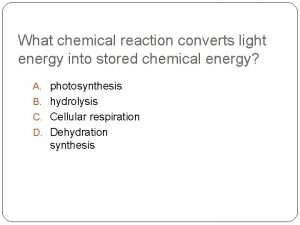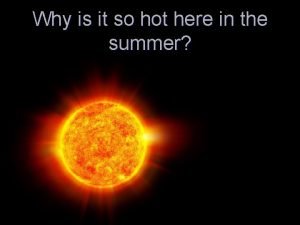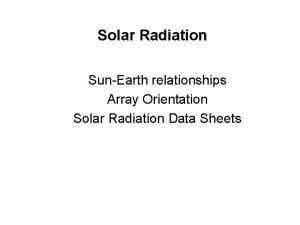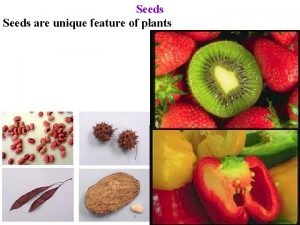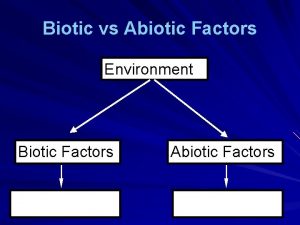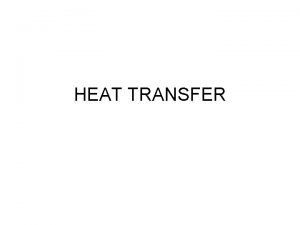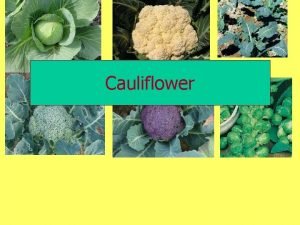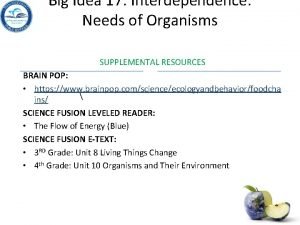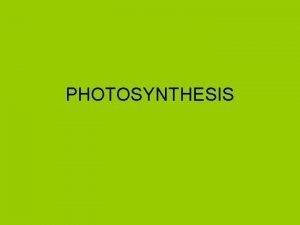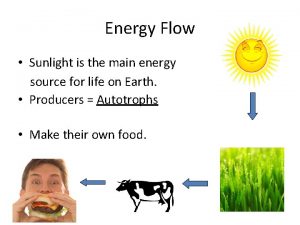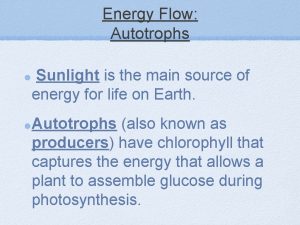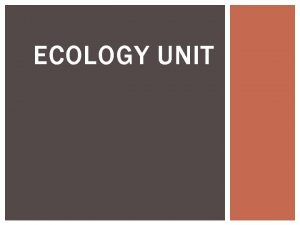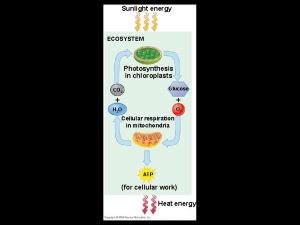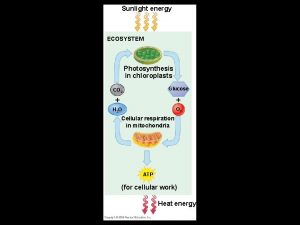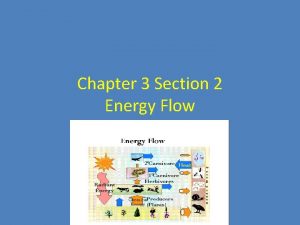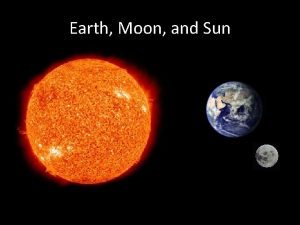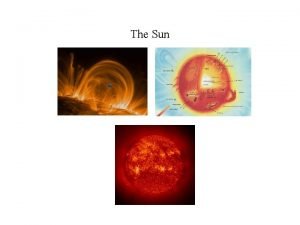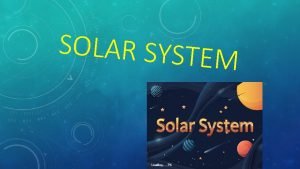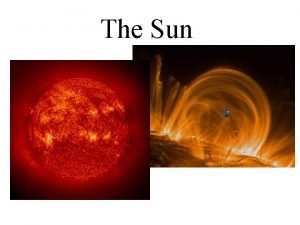Energy Flow Sun Light Sunlight is the main





















- Slides: 21

Energy Flow

Sun Light • Sunlight is the main energy source for all life on Earth. • What % of the sun’s energy is used by living things? • Less than 1% of all the sun’s energy that reaches the Earth is used by living things.

Producers / Autotrophs • Organisms that can produce their own food source. • Producers use sun light or chemical compounds to synthesize their own food.

Producers / Autotrophs • Only plants, some algae, & certain bacteria can capture energy from sunlight or chemicals. • Use energy from the environment to fuel the assembly of simple inorganic compounds into complex organic molecules. • These organic molecules combine to produce living tissue.

Main Autotrophs • Plants – on land • Algae – in fresh water, and the top layer of the ocean. • Cyanobacteria – wet lands and salt marshes.

Photosynthesis • Plants use sunlight to convert carbon dioxide (CO 2) and water into oxygen (O 2) and carbohydrates. • Photosynthesis is responsible for removing CO 2 from the atmosphere, and replenishing O 2.

Chemosynthesis • The conversion of energy from inorganic chemicals to organic compounds. • Chemosynthesis is performed by several types of bacteria. • These bacteria make up a large portion of autotrophs.

Consumers/Heterotrophs • Acquire their energy from other organisms. • Many diff types of heterotrophs. 1. Herbivores – eat plants 2. Carnivores – eat animals 3. Omnivores – eat both plants & animals

4. Detritivores – feed on plant and animal remains and other dead matter. - Ex. Earthworms & maggots 5. Decomposers – break down organic matter - Ex. Bacteria & fungi

Feeding Relationships • Energy flows through an ecosystem in one direction. • Energy flows from the sun or inorganic compounds to autotrophs and then to various heterotrophs.

Food Chains • A food chain is a series of steps in which organisms transfer energy by eating and being eaten.

Food Web • A food web links all the food chains in an ecosystem together.


Trophic Level • Each step in a food chain or a food web is called a trophic level. • Producers make up the first trophic level. • Consumers make up the 2 nd, 3 rd, 4 th & 5 th levels. • There are rarely more than 4 or 5 levels

Ecological Pyramids • Diagrams that show the relative amounts of energy or matter contained within each trophic level.

Energy Pyramid • • Energy pyramid- shows the relative amount of energy available at each trophic level. Only about 10% of the energy available within one trophic level is transferred to organisms at the next trophic level. - This is why there are rarely more than 4 or 5 levels

http: //raxacollective. files. wordpress. com/2011/08/energy_pyramid. png

Biomass Pyramid • Represents the amount of potential food available for each trophic level. • Expressed as grams per unit area. • The greatest biomass is at the base of the pyramid.


Pyramid of numbers • Shows the relative number of individual organisms at each trophic level.

 Light light light chapter 23
Light light light chapter 23 Into the light chapter 22
Into the light chapter 22 Chapter 22
Chapter 22 Solar energy is radiant light and heat from the sun
Solar energy is radiant light and heat from the sun Sankey diagram for one bounce of a ball answers
Sankey diagram for one bounce of a ball answers Ecological succession
Ecological succession Flow of energy vs flow of matter
Flow of energy vs flow of matter ________ converts light energy into chemical energy. *
________ converts light energy into chemical energy. * Photosynthesis transforms light energy into chemical energy
Photosynthesis transforms light energy into chemical energy Earth's revolution
Earth's revolution Indirect vs direct sunlight
Indirect vs direct sunlight Peak sun hours
Peak sun hours Seed maturation
Seed maturation Product development life cycle methodology
Product development life cycle methodology Biotic vs abiotic
Biotic vs abiotic Lux
Lux How does heat move
How does heat move Value added products of cauliflower
Value added products of cauliflower Raindrops sunlight and refraction lyrics
Raindrops sunlight and refraction lyrics Beauty poem class 6 drawing
Beauty poem class 6 drawing Big idea 17 interdependence
Big idea 17 interdependence Sunligj
Sunligj







